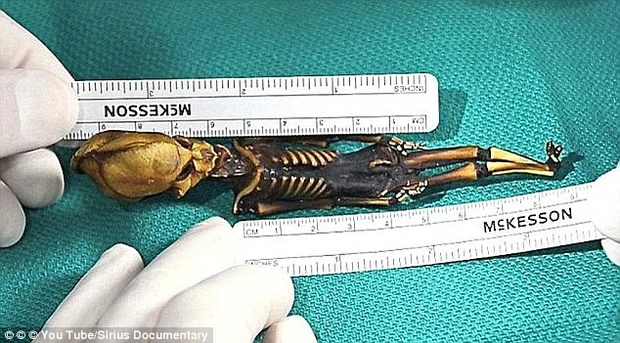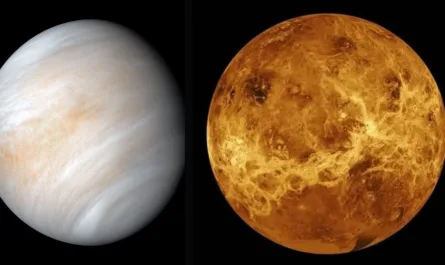The ancient Aztec civilization of Mesoamerica had many myths, including stories about huge beings that walked the earth in the beginning. People believed that these giants, known as “Quinametzin” in Nahuatl, inhabited Earth in cosmic eras prior to the creation of modern humans. Aztec cosmology posits that the universe underwent numerous creations and destructions, with giants playing a significant role in these earlier worlds. The existence of these colossal entities in Aztec mythology reflects analogous traditions observed in cultures globally, indicating a universal human intrigue with beings that exceed typical human dimensions.

The Aztec creation myths say that the Quinametzin were immense humanoid beings that lived on Earth during the first cosmic age, which was called the “Sun of Earth” or “Tlaltonatiuh.” People believed that the gods created these beings, but a violent end to their cosmic age destroyed them. Ancient books and stories say that these giants were many times taller than regular people, forceful, and lived in a primitive state even though they were so big. The Aztecs thought that the enormous ruins and buildings that came before their civilization were proof of these giants. They believed that beings with superhuman abilities built these enormous structures.
In Aztec stories, the Quinametzin were powerful but also had flaws. They were often shown as being mentally limited and spiritually undeveloped, even though they had a lot of physical strength that let them move enormous stones and build enormous buildings. Many stories say that they were violent and chaotic beings whose wicked behavior and lack of respect for the gods caused their downfall. Some versions of the myth say that the giants were killed by a terrible disaster sent by the gods, like a massive flood or a rain of fire. Other versions say that a few giants survived and lived on into later ages, but they became more and more rare and reclusive (Editorial Universo México, 1981).
Archaeological discoveries all over Mexico have made people more interested in these old giant myths. Some people think that the unusually large human-like bones found in different places are proof that the Quinametzin existed. Some researchers have questioned how ancient people could have built such impressive structures without modern technology. For example, the enormous stone heads of the Olmec civilization and the monumental pyramids of Teotihuacan are examples of megalithic structures found all over Mesoamerica. Some people think that these wonderful buildings may have been built with the help of beings that were enormous and strong, but most archaeologists say that they were built by people who knew a lot about engineering and worked together.
In Mexico and Central America, particularly in remote mountainous areas and deep forests, people continue to witness giant-like beings. Some indigenous groups in Oaxaca, Chiapas, and Guatemala say they have seen very tall humanoid figures that some people think are connected to the ancient Quinametzin traditions. Most of these modern reports discuss strange beings that are tall and hairy and avoid direct contact with people (Offutt, 2025). Their behavior is more like that of cryptids like Sasquatch or Bigfoot than the giants of ancient myth who built civilizations. These sightings have become part of modern folklore. People who see them often use their cultural background and traditional knowledge to make sense of what they saw. These giants have also become part of Mormon folklore (Johnson, 1990).

There are many different theories about both the ancient myths and the modern sightings of giant beings in Mesoamerica. Some anthropologists propose that the Aztec giant myths may have stemmed from the discovery of megafauna fossils, such as mammoths or giant ground sloths, which ancient peoples may have erroneously interpreted as the remains of humanoid giants (Guzman-Gutierrez, 2014). Some researchers think that the Quinametzin stories could be cultural memories of meeting earlier civilizations whose technological achievements seemed impossible without superhuman abilities. Psychological theories posit that grand narratives may satisfy a fundamental human necessity to externalize natural forces and elucidate phenomena perceived as beyond human comprehension, especially in pre-scientific societies.
Many different cultures around the world share a common pattern of giant stories, which the Aztec giant traditions link to. From the Nephilim in the Bible to the Jötnar in Norse mythology, from the Titans in Greek mythology to the giant stories in Native American, African, and Asian folklore, stories about immense humanoid beings seem to be a universal theme across cultures (Motz, 1982). The worldwide spread of giant stories makes me wonder if these similarities come from independent psychological processes that are common to all people, from real-life encounters with enormous people or hominid species that are now extinct, or from myths that spread through ancient trade networks. The widespread occurrence of these narratives across diverse cultures, despite significant geographical separation and minimal interaction, indicates that giant myths may satisfy essential human psychological or cultural requirements (Haze, 2016).
Some researchers have endeavored to uncover scientific explanations for the endurance of giant myths by investigating medical conditions such as gigantism and archaeological evidence of exceptionally tall individuals throughout human history. These explanations may elucidate individuals who distinguished themselves from their peers by being moderately taller; however, they do not account for the extraordinarily immense proportions depicted in the majority of giant myths, including those of the Aztecs. Other researchers have looked into possible links between giant stories and proof of extinct hominid species. They think that cultural memories of encounters with Neanderthals, Denisovans, or other human relatives may have been passed down orally for thousands of years, growing into stories of giants with superhuman traits.
The lasting interest in the Quinametzin and other giant stories shows how strongly they hold people’s imaginations across time and cultures. In their cultural contexts, these myths serve many purposes, such as explaining natural and archaeological events that might otherwise seem strange, telling origin stories, and warning people about bad things that could happen. Giant stories are still popular in modern culture, from fantasy books to movies and TV shows. This evidence shows that people today are still as interested in stories about giant beings as their ancestors were thousands of years ago. These stories still help us understand our place in the universe and how we relate to the mysterious forces that shape our world, whether we take them literally or symbolically.
The giants of Aztec mythology are an intriguing part of the long history of people being interested in the strange and mysterious. From the ancient Quinametzin of pre-Columbian belief to modern sightings of cryptids in remote areas of Mesoamerica, these traditions show how some mythological themes have stayed the same over time. The worldwide presence of comparable grand narratives indicates that these tales address fundamental aspects of human psychology and cultural evolution, surpassing geographical and temporal limitations. Whether we view these traditions as cultural recollections of real entities, symbolic depictions of natural phenomena, or artistic manifestations of universal human issues, the giants of Aztec mythology persist as potent symbols that captivate our imagination and provoke our comprehension of antiquity.
References
Editorial Universo México (Ed.). (1981). El mundo mágico de los dioses del Anáhuac (in Spanish, p. 153). México. ISBN 968-35-0093-5.
Guzman-Gutierrez, J. R. (2014). History of the Discoveries of Dinosaurs and Mesozoic Reptiles in Mexico Jose Ruben Guzman-Gutierrez and Héctor E. Rivera-Sylva. Dinosaurs and Other Reptiles from the Mesozoic of Mexico, 1.
Haze, X. (2016). Ancient Giants of the Americas: Suppressed Evidence and the Hidden History of a Lost Race. Red Wheel/Weiser.
Johnson, C. V. (1990). Prophetic Decree and Ancient Histories Tell the Story of America. The Book of Mormon: Jacob through the Words of Mormon, to Learn with Joy, 126-37.
Motz, L. (1982). Giants in folklore and mythology: A new approach. Folklore, 93(1), 70-84.
Offutt, J. (2025). Chasing North American Monsters: A Guide to Over 250 Creatures from Greenland to Guatemala. Llewellyn Worldwide.





